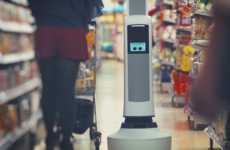



Programmers create human-like interfaces through intentionally erroneous tech
Implications - To err is human, but robots, AI, and technology in general are so incredibly advanced that mistakes rarely occur. Machines and software interfaces with minor, intentionally programmed slip-ups and errors can thus be more relatable than flawlessly precise and accurate tech. Along the same lines, brands can introduce humanizing mistakes into their efforts to better forge relationships with their consumers.
Workshop Question - What minor tweak could you make to your brand to make it more relatable for consumers?
Trend Themes
1. Intentional Errors in AI - Intentionally programming AI systems with minor errors or slip-ups can make them more human-like and relatable for users, creating opportunities for brands to better connect with their consumers.
2. Wearable AI Devices - AI-powered wearable devices, like the 'Anti AI AI' earpiece, can detect and differentiate between human and machine-generated voices, providing new avenues for combating fake news and disinformation spread by AI.
3. AI Customer Service Training - AI-powered customer service messaging tools, like Janis, can be trained and monitored from platforms like Slack, reducing time and costs associated with customer service and providing valuable analytics to improve the AI's performance.
Industry Implications
1. Artificial Intelligence - The increasing prevalence of intentional errors in AI, as well as new wearable and customer service training applications, are disrupting the AI industry by making these systems more human-like and adaptable to user needs.
2. Smart Home Technology - Projects like Lauren McCarthy's 'Lauren' project highlight the importance of addressing concerns about privacy and control when it comes to smart home technology, creating opportunities for companies to develop more transparent and user-centric systems.
3. Marketing and Branding - Intentional errors in AI and other human-like features offer new ways for brands to connect with consumers on a more personal level, while AI-powered customer service tools can help companies streamline their customer service processes and improve customer satisfaction.












































